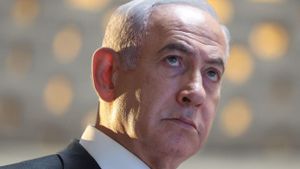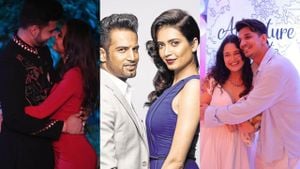Disney fans have been eagerly awaiting the release of Moana 2, and the sequel has finally hit theaters. Eight years after the original movie introduced viewers to the Polynesian princess, the sequel aims to capture audiences’ hearts once again. Despite not receiving the same level of acclaim as its predecessor, Moana 2 has attracted families to theaters, eager to engage with familiar characters and new adventures.
The film continues the story of Moana, voiced by Auli’i Cravalho, who discovers the storm god Nalo.
According to the film’s narrative, Nalo has cursed humanity, leading to the submergence of the mystical island of Motufetu — the origin of the ocean's currents. Without these currents, the different tribes of humans risk remaining isolated forever. Moana embarks on her perilous mission to confront Nalo and reverse the curse with the help of her allies. This new adventure poses significant threats, including Nalo, whose ominous presence looms over the story.
Interestingly, the actor behind Nalo, Tofiga Fepulea’i, is primarily celebrated for his comedic prowess. Previously part of the duo Laughing Samoans, Fepulea’i takes on the role of the vengeful storm god, showcasing his impressive vocal talents. His remarkable voice adds depth to the character, emphasizing Nalo's malice and intent. This casting decision marks a significant twist, as the audience is often introduced to comedic actors playing light-hearted roles — Fepulea’i’s transformation will certainly catch viewers off guard.
Fepulea’i, originally from Wellington, New Zealand, delved deep to showcase Nalo's anger and resentment toward humanity. Historically noted for his comedic stage performances and television credits, he transitions smoothly from the stage to vocal mastery required for animated storytelling. He initially gained fame through his work with Laughing Samoans, where his performance captivated audiences across New Zealand and beyond. Fepulea’i has now expanded his portfolio by taking roles within the Pacific film industry, appearing in features such as Three Wise Cousins (2016) and Take Home Pay (2019). Now, with Moana 2, he finds himself thrust onto the global stage, amplifying his reach with Disney’s expansive audience.
Critically, Moana 2 has garnered mixed feedback. Many appreciate it as a worthy follow-up, effectively continuing the beloved story established five years prior. Critics have noted how the sequel retains the spirit of its predecessor, focusing on themes of bravery, friendship, and cultural heritage woven throughout the narrative. Despite the hurdles Moana faces with Nalo, her determination and courage shine through, sticking to the essence of the franchise.
Numerous reviewers have pointed out the lack of compelling traditional villains, with Nalo described more as a force of nature than as personified evil. This takes the heart of storytelling in another direction — instead of conflicts resolved through confrontation, Moana 2 emphasizes problem-solving through empathy and ingenuity. It challenges the typical mold of animated films, where villains are easily identifiable and easily defeated.
Even though the original cast returned for the sequel, bringing back the chemistry between Cravalho and Dwayne Johnson as Maui, the story also introduces new dynamics with the addition of Matangi, played by Awhimai Fraser — this character serves as both friend and foe to Moana, contributing depth to the interactions throughout the movie.
Moana 2 reflects modern storytelling by creating able female protagonists who aren’t defined by male counterparts. Auli’i Cravalho asserts herself, stating, “For today’s day and age, we want to see young women being the heroes of their own stories.” Having the development of characters who can stand strong without romantic entanglements is significant — Moana’s role remains focused on self-discovery and familial connections, showcasing the film’s commitment to staying relevant to contemporary views on female representation.
Production of Moana 2 also entailed collaboration between varied artists, with music contributions from Mark Mancina, who returns from the original score. This time he’s joined by fresh faces Abigail Barlow and Emily Bear. Barlow and Bear's contributions are lyrically engaging, with standout musical numbers sure to resonate with audiences. This lyrical evolution not only supports character development but also fosters enchanting experiences for all who watch.
Fans of the franchise are eagerly speculating what Moana 3 could entail, especially considering the hints dropped throughout the sequel. The post-credit scenes leave viewers with tantalizing thoughts about potential collaborations and confrontations, signaling to dedicated followers of the franchise to stay prepared for another grand adventure.
The franchise's overall narrative has also become somewhat of cultural commentary. From examining complex godly interactions with human affairs to addressing isolation and connectivity between tribes, these plot points are dense with meaning. With each new encounter, the movie poses questions about legacy, belonging, and familial ties.
With enchanting animation, engaging soundscapes, and rich storytelling, Moana 2 has found its place alongside its predecessor, even if it didn’t hit the same milestone heights. The film has successfully captivated audiences, even with the scrutiny it has faced. The anticipation of what’s next for Moana and her world remains palpable, keeping both die-hard fans and nostalgic newcomers glued to the screen.
Moana’s exponential growth since her debut reflects not just character development but also the progressive changes within modern cinematic storytelling. Moana 2 shows both the character and the film franchise’s resilience moving forward, ensuring audiences remain invested as they sail toward future adventures.



